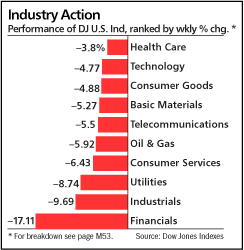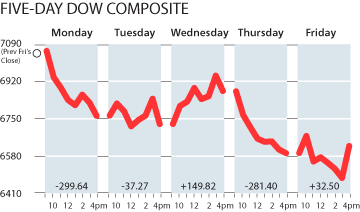
The New York Times, in a Pulitzer Prize-worthy feat of investigative reporting (not really), this week exposed some of the dirty little secrets of wind power: among them, that significantly increasing its use will also require the construction of new conventional power plants, as backup for wind turbines that don't turn when the wind doesn't blow. "Wind, almost everybody's best hope for big supplies of clean, affordable electricity, is turning out to have complications," the Times reported Thursday. Maybe the article should be clipped and sent out to all those -- including Statehouse Democrats and the governor-elect -- who are banking on wind and other renewables as the answer to our energy challenges.
This is the excellent analogy the Times uses to explain the situation: "A wind machine is a bit like a bicycle that a commuter keeps in the garage for sunny days. It saves gasoline, but the commuter has to own a car anyway." Thus, according to the story, "wind turns out to be a good way to save fuel, but not a good way to avoid building plants that burn coal."
The grid not only requires a steady flow of electricity to function properly, but consumers and businesses need the grid to respond instantaneously to meet demand -- neither of which wind farms can do. The best technology to provide backup for wind farms when the turbines aren't turning is a natural gas-fired power plant, which isn't cheap to operate or build. The higher the reliance on wind, the greater the need for conventional power plants to serve as backups. Without factoring the costs of constructing, maintaining and operating those backup plants into the equation, along with the cost of building and maintaining new transmission lines to the often remote places where these farms are located, you're not looking at the big picture. The article points out that these additional factors make wind power less-than-cost-competitive with coal, even when federal wind subsidies are factored in.
The cost of operating a coal-fired power plant could rise in the future, depending on energy markets and whether governments begin taxing carbon dioxide, an idea that is bound to gain momentum with tax-and-regulate Democrats running Congress and Colorado's Legislature. But refrain from imposing this foolish tax, and take away the federal subsidies and other forms of support for the wind power industry, and wind farms are net losers, in terms of the cost per megawatt hour.
Knee-jerk supporters of renewables, especially wind, will argue that the extra cost is worth it if the emissions from coaland natural gas-fired plants are reduced. But whether ratepayers will calculate the costs and benefits that way when the bills come due for the wind power craze remains to be seen. Maybe ratepayers will be happy to pay more for cleaner and "greener" energy (which they can do now, through voluntary programs). Or maybe ratepayers will feel like they were sold a bill of goods.
The point of the Times story was clear: "Without major advances in ways to store large quantities of electricity or big changes in the way regional power grids are organized, wind may run up against its practical limits sooner than expected."
We don't doubt that, over time, innovations will help solve some of wind power's technical drawbacks. But the march of innovation will also help make conventional power plants more efficient and clean over time. To pretend that innovation will fall only to the benefit of renewables, while it stands still everywhere else, is just one of many fallacies renewable advocates lean on for support.
We're not arguing that renewables don't have a role to play -- just that such decisions should be dictated not by government mandates, but through the voluntary actions of utility companies, responding to market forces and consumer demand. We hope that acknowledging "clean" energy's dirty little secrets will help the reflex regulators see the light and think twice before imposing any more mandates.
This is the excellent analogy the Times uses to explain the situation: "A wind machine is a bit like a bicycle that a commuter keeps in the garage for sunny days. It saves gasoline, but the commuter has to own a car anyway." Thus, according to the story, "wind turns out to be a good way to save fuel, but not a good way to avoid building plants that burn coal."
The grid not only requires a steady flow of electricity to function properly, but consumers and businesses need the grid to respond instantaneously to meet demand -- neither of which wind farms can do. The best technology to provide backup for wind farms when the turbines aren't turning is a natural gas-fired power plant, which isn't cheap to operate or build. The higher the reliance on wind, the greater the need for conventional power plants to serve as backups. Without factoring the costs of constructing, maintaining and operating those backup plants into the equation, along with the cost of building and maintaining new transmission lines to the often remote places where these farms are located, you're not looking at the big picture. The article points out that these additional factors make wind power less-than-cost-competitive with coal, even when federal wind subsidies are factored in.
The cost of operating a coal-fired power plant could rise in the future, depending on energy markets and whether governments begin taxing carbon dioxide, an idea that is bound to gain momentum with tax-and-regulate Democrats running Congress and Colorado's Legislature. But refrain from imposing this foolish tax, and take away the federal subsidies and other forms of support for the wind power industry, and wind farms are net losers, in terms of the cost per megawatt hour.
Knee-jerk supporters of renewables, especially wind, will argue that the extra cost is worth it if the emissions from coaland natural gas-fired plants are reduced. But whether ratepayers will calculate the costs and benefits that way when the bills come due for the wind power craze remains to be seen. Maybe ratepayers will be happy to pay more for cleaner and "greener" energy (which they can do now, through voluntary programs). Or maybe ratepayers will feel like they were sold a bill of goods.
The point of the Times story was clear: "Without major advances in ways to store large quantities of electricity or big changes in the way regional power grids are organized, wind may run up against its practical limits sooner than expected."
We don't doubt that, over time, innovations will help solve some of wind power's technical drawbacks. But the march of innovation will also help make conventional power plants more efficient and clean over time. To pretend that innovation will fall only to the benefit of renewables, while it stands still everywhere else, is just one of many fallacies renewable advocates lean on for support.
We're not arguing that renewables don't have a role to play -- just that such decisions should be dictated not by government mandates, but through the voluntary actions of utility companies, responding to market forces and consumer demand. We hope that acknowledging "clean" energy's dirty little secrets will help the reflex regulators see the light and think twice before imposing any more mandates.





















